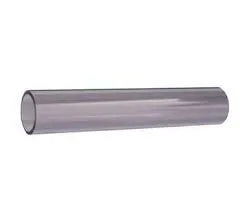Kas . 01, 2024 06:04 Back to list
High-Density Polyethylene Pipe Fittings for Durable and Efficient Connections in Plumbing Systems
Understanding HDPE Pipe Fittings A Comprehensive Overview
High-Density Polyethylene (HDPE) pipe fittings have become increasingly popular in a variety of industries due to their remarkable properties, versatility, and cost-effectiveness. HDPE is a thermoplastic polymer produced from petroleum that has gained wide acceptance for its application in numerous piping systems. This article aims to provide a detailed overview of HDPE pipe fittings, discussing their benefits, applications, and installation methods.
Benefits of HDPE Pipe Fittings
One of the most significant advantages of HDPE pipe fittings is their resistance to corrosion and chemical damage. Unlike traditional materials like metal or PVC, HDPE does not rust or corrode, making it an ideal choice for transporting a wide range of substances, including water, chemicals, and gas. This resistance ensures a longer lifespan for the fittings, significantly reducing maintenance and replacement costs over time.
Moreover, HDPE fittings are remarkably durable and can withstand extreme temperatures, making them suitable for both hot and cold applications. They are also lightweight and flexible, allowing for easy handling and installation. The flexibility of HDPE can help to reduce the risk of damage during installation, as it can bend without breaking, which is particularly beneficial in areas subject to seismic activity.
Applications of HDPE Pipe Fittings
hdpe pipe fittings

HDPE pipe fittings are extensively used in various sectors, including municipal, industrial, agricultural, and residential applications. In municipal water systems, HDPE pipes and fittings are employed for water supply and sewage lines. Their leak-proof joints and high flow capacity make them a preferred choice for many municipalities worldwide.
In agriculture, HDPE pipe fittings are integral to irrigation systems, providing efficient water distribution that supports sustainable farming practices. Their resistance to chemicals also makes them suitable for conveying fertilizers and pesticides, ensuring the integrity of these vital substances.
In industrial settings, HDPE fittings are used for transporting hazardous materials, including acids and bases, due to their outstanding chemical resistance. The oil and gas industry also utilizes HDPE for various applications, including the transportation of crude oil and natural gas, where durability and reliability are paramount.
Installation of HDPE Pipe Fittings
The installation of HDPE pipe fittings requires careful planning and execution to ensure the integrity of the system. The most common methods of joining HDPE fittings include heat fusion, electrofusion, and mechanical fittings. Heat fusion involves heating the edges of the pipe and fitting until they melt together, forming a strong bond. Electro-fusion works by using an electric current to create a bond between the fitting and pipe, while mechanical fittings use clamps and bolts to secure the connection without the need for heat.
In conclusion, HDPE pipe fittings offer numerous advantages, including durability, corrosion resistance, and flexibility, making them suitable for a wide range of applications. Their ease of installation and long-lasting performance make them an excellent choice for both businesses and individual consumers looking to invest in reliable piping systems. As industries continue to advance and demand more efficient solutions, HDPE pipe fittings will undoubtedly play a crucial role in the future of piping technologies.
-
25mm PVC Irrigation Pipe - Durable & Efficient Watering Solution for Farms & Gardens
NewsJul.05,2025
-
HDPE Culvert Pipe Supplier – Durable, Leak-Proof & Easy Installation Solutions
NewsJul.05,2025
-
High Transparency PVC Clear Sheet Super Transparency PVC Sheets & HDPE Cutting Board Supplier
NewsJul.04,2025
-
High-Quality PVC-M Pipe Supplier Trusted PVC Pipe Company & 75mm PVC Connection Pipe Solutions
NewsJul.04,2025
-
PVC Transparent Sheet Roll - Durable & Flexible PVC Plastic Sheet Roll for Industrial & Home Use
NewsJun.24,2025
-
High-Quality PVC PPR Pipes and Fittings Durable ERA PPR Solutions
NewsJun.10,2025

